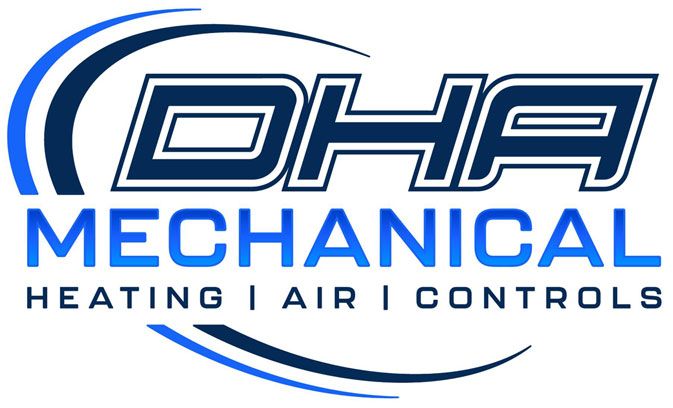HVAC Glossary
DHA Mechanical, Inc.
Demystifying HVAC: Your Essential Glossary
Navigating the world of heating, ventilation, and air conditioning can be confusing with all the technical terms. That's why DHA Mechanical, Inc has compiled a comprehensive HVAC glossary to help both our commercial and residential clients in the Bay Area and San Joaquin Valley. Don't let HVAC terminology intimidate you - call or text us for clear explanations and professional service.
Air Conditioning Glossary
Airflow
The distribution or movement of air.
Air-Conditioning and Refrigeration Institute (ARI)
ARI is an industry trade association that develops standards for measuring and certifying product performance. For instance, AHRI Standard 270 provides guidelines for establishing sound levels for outdoor air-conditioning equipment.
Air Handler/Coil Blower
The indoor part of an air conditioner or heat pump that moves cooled or heated air throughout the ductwork of your building. An air handler is usually a furnace or a blower coil.
Central Air Conditioning System
System in which air is treated at a central location and distributed to and from rooms by one or more fans and a series of ducts.
CFM
Stands for cubic feet per minute. This measurement indicates how many cubic feet of air pass by a stationary point in one minute. The higher the number, the more air is being moved through the ductwork by the system.
Composite Fan Blades
Used in select outdoor air conditioner or heat pump units, blades are manufactured with rugged materials and an exclusive angled design that improve operation and durability, even in the harshest environments.
Compressor
The part of the outdoor air conditioner or heat pump that compresses and pumps refrigerant to meet household cooling requirements.
Condenser Coil
The outdoor portion of an air conditioner or heat pump that either releases heat or collects heat.
Damper
A movable plate, located in the ductwork, that regulates airflow. Dampers are used to direct air to the areas that need it most. Typically used in a zoning application.
Dual Fuel
A comfort system that pairs an electric heat pump with a gas furnace, providing an energy-efficient alternative to the conventional furnace/air conditioner combination.
Ductwork
The method by which air is channeled from the furnace or the blower coil throughout your building.
Evaporator Coil
The part of the air conditioner or heat pump that is located inside the air handler or attached to the furnace. Its primary function is to absorb the heat from the air in your building.
Humidifier
An indoor air quality device that introduces moisture to heated air as it passes from the furnace into the ductwork for distribution throughout the building.
HVAC
Heating, Ventilation and Air Conditioning.
Indoor Coil
See evaporator coil.
Outdoor Coil
See condenser coil.
Programmable Thermostat
A thermostat with the ability to record different temperature/time settings for your heating and/or cooling equipment.
R-22 Refrigerant
The old standard for residential and commercial air conditioners, the U.S. EPA is now phasing out R-22 refrigerant.
R-410A Refrigerant
A chlorine-free refrigerant that meets the EPA’s newest, most stringent environmental guidelines at the moment.
Refrigerant
A chemical that produces a cooling effect while expanding or vaporizing. Most commercial/industrial air conditioning units contain the standard R-22 refrigerant, or Freon.
Refrigerant Lines
Two copper lines that connect the outdoor air conditioner or heat pump to the indoor evaporator coil.
Scroll Compressor
A specially designed compressor that works in a circular motion, as opposed to up-and-down piston action.
SEER
The Seasonal Energy Efficiency Ratio is an energy efficiency rating for air conditioners. The higher the SEER, the better the energy performance, the more you save. The DOE’s established minimum SEER rating for cooling is 14.00.
Single Package
A heating and cooling system contained in one outdoor unit.
Split System
An HVAC system in which some components are located inside the structure of the building and some are located outside. Split systems should be matched for optimal efficiency.
Thermidistat
Monitors temperature and humidity and adjusts heating or cooling system to maintain desired levels.
Thermostat
Usually found on an inside wall, this device operates as a control to regulate your heating and cooling equipment, allowing you to adjust your home comfort at the touch of a switch.
Two-Stage Operation
Provides two levels of heating or cooling output for greater temperature control, energy efficiency and improved indoor air quality.
Ventilator
A system that exchanges stale, recirculated indoor air with fresh, filtered outside air.
Zoning
A method of partitioning a building into independently controlled comfort zones for enhanced comfort and efficiency
Heating Glossary
AFUE
Annualized Fuel Utilization Efficiency is a measure of your furnace’s heating efficiency. The higher the AFUE percentage, the more efficient the furnace. The minimum percentage established by the DOE for furnaces is 81%.
Air Handler/Coil Blower
The indoor part of an air conditioner or heat pump that moves cooled or heated air throughout the ductwork of your building. An air handler is usually a furnace or a blower coil.
BTU
A British thermal unit is a unit of heat energy. One Btu is the amount of heat required to raise one pound of water by one degree Fahrenheit. The higher the Btu rating, the greater the heating capacity of the system.
CAE
The Combined Annual Efficiency is a measure of the amount of heat produced for every dollar of fuel consumed for both home and water heating.
CFM
Stands for Cubic Feet per Minute. This measurement indicates how many cubic feet of air pass by a stationary point in one minute. The higher the number, the more air is being moved through the ductwork by the system.
Composite Fan Blades
Used in select outdoor air conditioner or heat pump units, blades are manufactured with rugged materials and an exclusive angled design that improve operation and durability, even in the harshest environments.
Condenser Coil
The outdoor portion of an air conditioner or heat pump that either releases, depending on the time of the year.
Damper
A movable plate, located in the ductwork, which regulates airflow. Dampers are used to direct air to the areas that need it most. Typically used in a zoning application.
Dual Fuel
A comfort system that pairs an electric heat pump with a gas furnace, providing an energy-efficient alternative to the conventional furnace/air conditioner combination.
Ductwork
The method by which air is channeled from the furnace or the blower coil throughout your building.
Evaporator Coil
The part of the air conditioner or heat pump that is located inside the air handler or attached to the furnace. Its primary function is to absorb the heat from the air in your building.
Heat Exchanger
Located in the furnace, the heat exchanger transfers heat to the surrounding air, which is then pumped throughout the building.
Heat Pump
A heat pump is an HVAC unit that heats or cools by moving heat. During the winter, a heat pump draws heat from outdoor air and circulates it through your building’s air ducts. In the summer, it reverses the process and removes heat from your building and releases it outdoors.
HSPF
The Heating Seasonal Performance Factor is the heating efficiency rating for heat pumps. The higher the rating, the more efficient the heat pump. HSPF will be regulated in 2006 at 7.7.
HVAC
Heating, Ventilation and Air Conditioning.
Programmable Thermostat
A thermostat with the ability to record different temperature/time settings for your heating and/or cooling equipment.
Single Package
A heating and cooling system contained in one outdoor unit.
Split System
An HVAC system in which some components are located inside the structure of the building and some are located outside. Split systems should be matched for optimal efficiency.
Thermidistat
Monitors temperature and humidity and adjusts heating or cooling system to maintain desired levels.
Thermostat
Usually found on an inside wall, this device operates as a control to regulate your heating and cooling equipment, allowing you to adjust your home comfort at the touch of a switch.
Upflow
When an air handler or furnace is installed in an upright position and circulates air through the side or bottom and out through the top. Typically used in basement, closet and attic installations.
Variable Speed Motor
A motor that automatically adjusts the flow of warm or cool air for ultimate comfort and efficiency.


Share On: